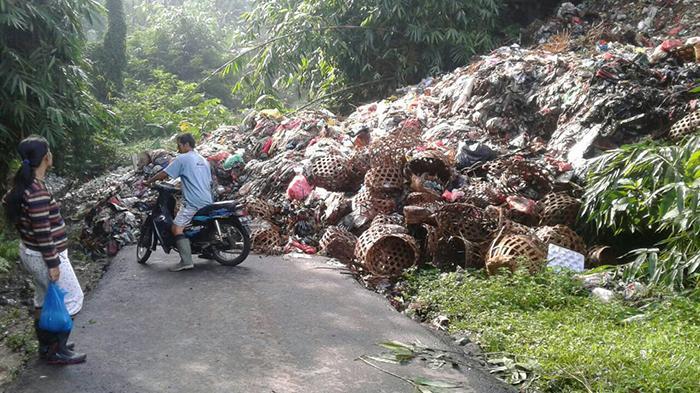Landslides is a natural disaster that often threatens life and infrastructure in various regions around the world. There are areas that are more prone to landslides than other areas. The factors that make an area vulnerable to landslide are complex and involve various aspects, such as geography, weather, climate, human activities, geological processes, and the role of vegetation and land cover. This article will explore these factors, as well as government and community efforts to reduce the risk of landslides in vulnerable areas.

Geographical Factors That Make Areas Vulnerable to Landslides
One of the main factors that makes some areas more vulnerable to landslide is their geography. Areas with steep topography, such as mountain slopes and steep hills, tend to have a higher level of landslide risk. In addition, soil that is above rocks that are unstable or has a weak geological structure is also a determining factor.
In addition, areas with high levels of rainfall are also at higher risk of landslides. Heavy rains can cause the soil to become saturated with water, reducing soil holding capacity, and triggering the movement of unstable soil masses.
The Role of Weather and Climate in Vulnerability to Landslides
Weather and climate play an important role in the level of vulnerability of an area to landslides. Irregular rain patterns or excessive rainfall can increase the risk of landslides. A dry climate followed by periods of intense rain can cause the soil to become dry and brittle, making it vulnerable to landslides when the rains come.
Climate change also has a significant impact on landslide risk. Rising global temperatures can trigger ice melt and increase rain intensity, which in turn increases the likelihood of landslides.

Relationship Between Human Activity and Landslides
Human activities can also play a role in the occurrence of landslide in an area. Uncontrolled deforestation, changes in land use, and irregular development can disturb the natural balance of the environment, increase soil erosion, and weaken the binding capacity of the soil. In addition, the construction of settlements on steep slopes and without regard for good spatial planning can also increase the risk of landslides.
Geological Processes and Susceptibility to Landslides
Geological processes have an important role in determining the susceptibility of an area to landslides. Tectonic plate movements, earthquakes and volcanic activity can cause shifts and rifts of the ground which in turn increases the risk of landslides.
In addition, the thickness of the soil layer and the type of rock present also affect the stability of the slopes. Soils that have a high clay content tend to be more susceptible to landslides because clay has a low ability to bind water and easily shifts when exposed to high loads.
The Role of Vegetation and Land Cover in Preventing Landslides
Good vegetation and land cover play a crucial role in preventing landslide. Plant roots function as soil anchors, reducing erosion and movement of soil masses. In addition, plants also help increase water infiltration into the soil, reduce groundwater saturation, and maintain slope stability.
The importance of preserving existing forests and vegetation, as well as adopting sustainable land management practices, cannot be ignored if the risk of landslides is to be reduced in vulnerable areas.
Government and Community Efforts to Reduce Landslide Risk
Government efforts and active community participation play an important role in reducing the risk of landslides in vulnerable areas. The government must adopt holistic disaster risk management policies, including improving early warning systems, landslide-resistant infrastructure, and increasing public awareness and education about mitigation measures.
The community’s role is also crucial in reducing the risk of landslides by complying with spatial regulations, reporting potentially hazardous conditions, and being involved in environmental conservation and land rehabilitation.
Overall, reducing landslide risk is a complex challenge and requires an integrated approach. By understanding the factors that make an area vulnerable to landslides, involving the government, the community, and using the right technology and engineering methods, we can reduce the negative impacts of landslides and protect life and the environment in vulnerable areas.
In facing this challenge, it is important for all of us to collaborate and work together. By raising awareness of landslide risks and taking appropriate preventive steps, we can create a safer and more sustainable environment for future generations.
Use of Technology and Engineering Methods to Reduce Landslide Risk
An example of technology that can be used to reduce the risk of landslide is the Landslide Monitoring System or the Landslide Monitoring System. The system uses sensors installed on landslide-prone slopes to detect small changes in slope, such as soil movement or changes in pressure. The collected data is then analyzed to predict the potential for landslides and to provide early warning to the public and authorities.
Utilization of the Landslide Monitoring System allows us to understand slope behavior better and be able to take more effective mitigation actions. This contributes to reducing the risk of landslides and protecting life and infrastructure in vulnerable areas.
For Landslide Monitoring System Services:
Whatsapp/Mobile Support :
0815-9072-797 (Mrs.Sri)
0812-9595-7914 (Mr.Parmin)
Phone : +62 21 8690 6777
Fax : +62 21 8690 6770
Email : sales@taharica.com
visit our other website : taharica.co.id

